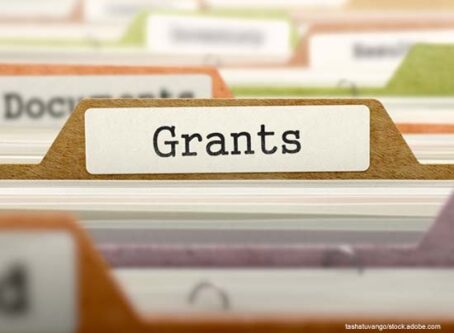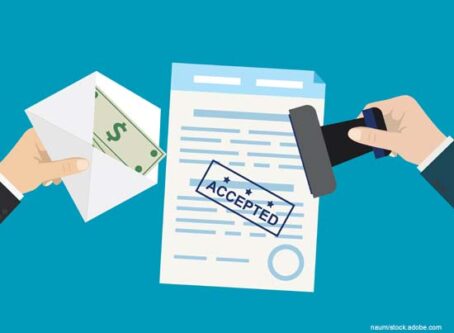California ports propose $20 Clean Truck Fund rate
California port truckers may pay a fee per container next year to incentivize cleaner trucks. The ports of Los Angeles and Long Beach recently proposed a Clean Truck Fund rate of $10 and $20.
On Dec. 17, the Port of Los Angeles and Port of Long Beach released a draft of its economic study for a Clean Truck Fund rate as directed by the 2017 Clean Air Action Plan update. The ports propose a fee of $10 per loaded 20-foot equivalent unit (TEU) or $20 per loaded 40-foot equivalent unit (FEU).
According to the report, the fee will be charged to the “beneficial cargo owner” for loaded containers hauled by a truck. Zero-emission trucks will be exempt from the Clean Truck Fund rate. Low-NOx trucks also will have an exemption.
The Clean Truck Fund was implemented to transition port fleets to near-zero emissions in the short term and zero emissions by 2035. At the proposed rate, the Clean Truck Fund will generate about $90 million a year. Ports plan to begin collecting fees next fall.
Comments will be accepted through Jan. 31 and can be emailed to trucks@cleanairactionplan.org.
Clean Truck Fund rate costs burden on drivers
On Dec. 18, the ports held a workshop to receive public input on the proposed Clean Truck Fund rate. Some had concerns that the costs will be paid by the truckers.
Although the report states the beneficial cargo owner will pay the fee, rampant misclassification of truck drivers at the ports could shift that cost onto the truckers.
During the workshop, 26-year-old Jose Alvarez, who identified himself as a “misclassified port truck driver” for XPO Logistics, expressed those concerns.
“We ask that whatever the rate you approve, that you make sure that the cost doesn’t get put onto us, the truck drivers, like all other company costs are,” Alvarez said.
Jessica Durrum, director of the Los Angeles Alliance for a New Economy, shared Alvarez’s concerns. Durrum highlighted the misclassification of port drivers. More specifically, she pointed out that drivers are paying for many of the costs that the company should be paying. Durrum said measures should be taken to ensure truckers do not shoulder the costs of the Clean Truck Fund rate.
Chris Cannon, director of environmental management at the Port of Los Angeles, said the ports have truckers in mind.
“Nobody wants the drivers to get hit with a fee,” Cannon said. “That’s something that has been brought up and is a very, very significant issue for us. A big concern.”
Clean Truck Fund rate not high enough?
There were many present during the workshop that believe $10 and $20 per container is not enough.
Todd Campbell, vice president of public policy and regulatory affairs for Clean Energy Fuels, expressed his strong disapproval of the proposed rate.
“I think $10 is a nonstarter,” Campbell said. “It’s not going to create a significant transition, not the one that you’re anticipating, and I certainly wouldn’t call it a zero-emission plan, because you’re never going to get zero with $10.”
Campbell said he would like to see a rate closer to $70 per FEU, the highest end of the feasible range within the study. Other stakeholders echoed that sentiment, including representatives from SoCalGas, the California Hydrogen Business Council, Breathe L.A., the Coalition for Clean Air and the Natural Resources Defense Council.
One trucker also supported a higher Clean Truck Fund rate. A man who only identified himself as Martin with a trucking company said a $10 rate will not cover the costs of minor repairs for cleaner trucks. Essentially, port trucking companies cannot afford newer technologies with the fund at the proposed rate.
Likewise, Breathe LA CEO Marc Carrel wants a Clean Truck Fund rate of $100 or more. Supporting the higher rate, Carrel said a $100 fee would only add a dollar or less per item in cargo.
Clean Truck Program
The Clean Truck Fund rate stems from California’s Clean Truck Program and Clean Air Action Plan, which was updated in 2017.
Phase one of the Clean Trucks Program update requires any new truck registered in the Port Drayage Trucks Registry after Oct. 1, 2018, to be model year 2014 or newer. The goal is to have all port trucks at zero emissions by 2035.
However, trucking companies need incentive to get there. The Clean Truck Fund is being established to give trucking companies that incentive. Those that reach near-zero or zero emissions will be exempt. In the meantime, money from the fund will be used to subsidize newer, cleaner trucks.
Currently, more than 18,000 trucks are registered. However, there are only nine zero-emissions trucks registered. When collection of the Clean Truck Fund rate begins in fall 2020, CARB-certified low-NOx engines or better will be exempt. However, CARB is not scheduled to set low-NOx standards until next spring. Until then, fleet and truck owners are in the dark regarding what kind of truck will be accepted for rebates.
Beginning 2023, newly registered trucks will be required to have CARB-certified low-NOx engines or better, based on the standards to be set in 2020. Trucks that have already been registered before 2023 will be able to continue operating regardless of emissions quality.
Although ultra-low NOx natural gas trucks are technically feasible, the infrastructure needs improvement for widespread deployment, according to the report. Battery and zero-emission trucks are in the “demonstration phase.”
Additionally, price differentials between diesel trucks and low-NOx trucks are as high as $150,000. If the Clean Truck Fund rate generates $90 million a year, about 600 trucks can be fully transitioned. However, the fund will likely generate less revenue each year as trucks slowly reach emissions compliance.









